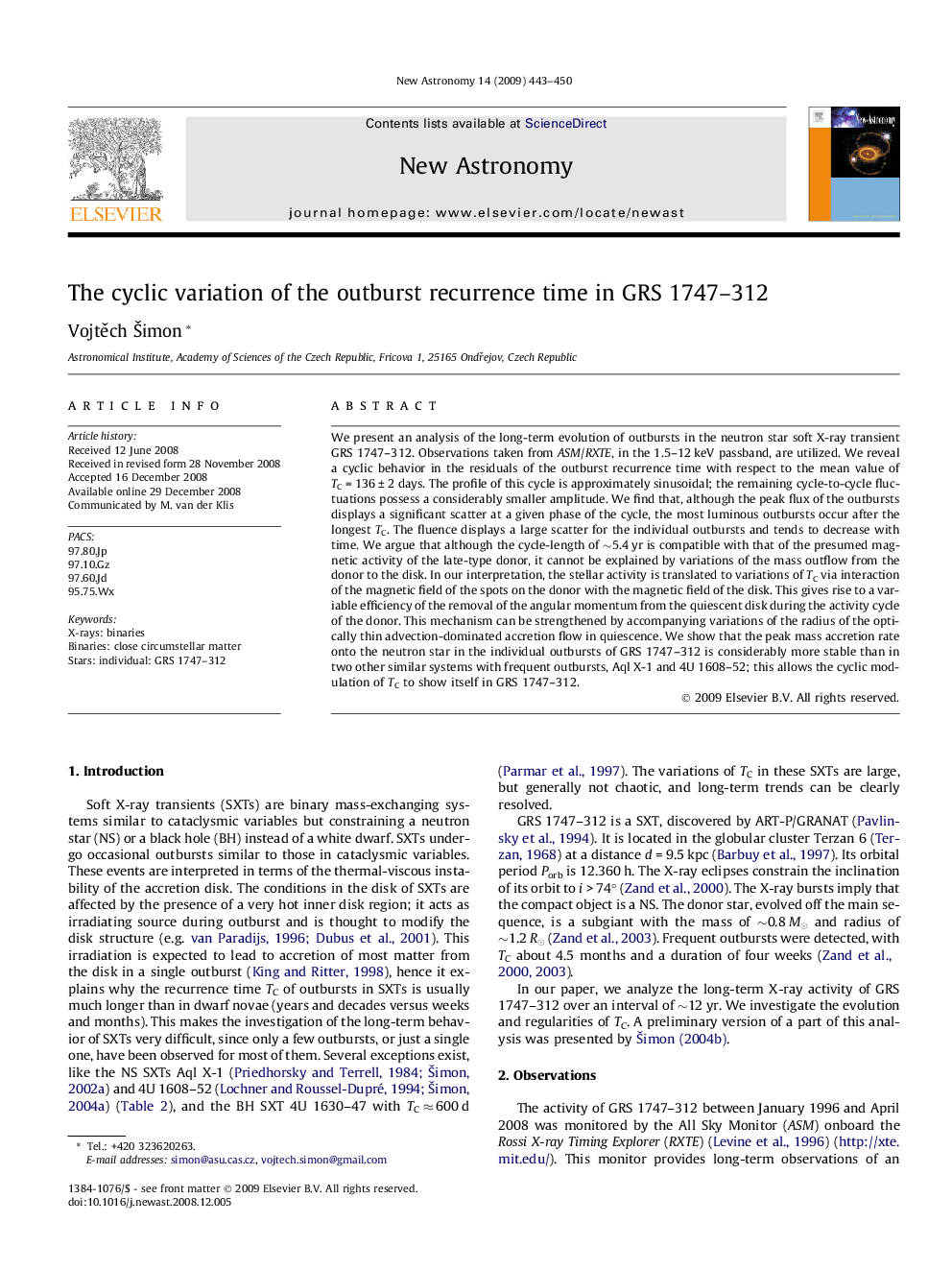| Article ID | Journal | Published Year | Pages | File Type |
|---|---|---|---|---|
| 1779589 | New Astronomy | 2009 | 8 Pages |
We present an analysis of the long-term evolution of outbursts in the neutron star soft X-ray transient GRS 1747–312. Observations taken from ASM/RXTE, in the 1.5–12 keV passband, are utilized. We reveal a cyclic behavior in the residuals of the outburst recurrence time with respect to the mean value of TC = 136 ± 2 days. The profile of this cycle is approximately sinusoidal; the remaining cycle-to-cycle fluctuations possess a considerably smaller amplitude. We find that, although the peak flux of the outbursts displays a significant scatter at a given phase of the cycle, the most luminous outbursts occur after the longest TC. The fluence displays a large scatter for the individual outbursts and tends to decrease with time. We argue that although the cycle-length of ∼5.4 yr is compatible with that of the presumed magnetic activity of the late-type donor, it cannot be explained by variations of the mass outflow from the donor to the disk. In our interpretation, the stellar activity is translated to variations of TC via interaction of the magnetic field of the spots on the donor with the magnetic field of the disk. This gives rise to a variable efficiency of the removal of the angular momentum from the quiescent disk during the activity cycle of the donor. This mechanism can be strengthened by accompanying variations of the radius of the optically thin advection-dominated accretion flow in quiescence. We show that the peak mass accretion rate onto the neutron star in the individual outbursts of GRS 1747–312 is considerably more stable than in two other similar systems with frequent outbursts, Aql X-1 and 4U 1608–52; this allows the cyclic modulation of TC to show itself in GRS 1747–312.
